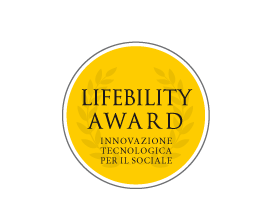LB.12.060P_E-WAKER
Per partecipare al concorso i progetti vanno inviati entro:
di Leonardo Matteo Di Noi, Manduria
L’idea nasce per creare uno strumento con cui fronteggiare la sindrome delle apnee ostruttive nel sonno (OSAS), una malattia cronica caratterizzata da apnee o ipopnee ricorrenti durante il sonno notturno causate dall’ostruzione delle vie respiratorie superiori. Uno studio recente ha evidenziato una prevalenza di questo disturbo pari al 49,7% nella popolazione maschile e al 23,4% nella popolazione femminile.
Il progetto mira alla realizzazione di un dispositivo per la diagnosi e il monitoraggio di suddetta Sindrome. Il primo passo è programmare un dispositivo indossabile, ad es. un braccialetto ricaricabile, dotato di appositi sensori, per raccogliere i dati dei pazienti per poi analizzarli, il cui scopo è definire pattern specifici, consentendo di monitorare l’insorgenza delle apnee. Un ulteriore passaggio è supportare il dispositivo con un software. Questa caratteristica è importante, per monitorare l’evoluzione della patologia e vedere, in caso di trattamento, se le condizioni del paziente stanno migliorando.
Gli obiettivi che la proposta si pone sono la realizzazione del sistema nel suo complesso, con particolare attenzione allo sviluppo del sistema software che, attraverso il machine learning, riconosca l’insorgenza di eventi scaturiti dalla sindrome monitorata e possa quindi consentire un intervento da parte del personale medico dedicato.
Lo sviluppo del nostro dispositivo potrebbe avere un forte impatto su diversi aspetti della vita di un individuo e dell’intera società. In primo luogo, potrebbe essere efficacemente utilizzato per diagnosticare OSAS nelle persone di cui la vita è stata colpita da questa sindrome e si sospetta che ne soffra. In quanto le apnee ostruttive possono anche influenzare negativamente la condizione di un paziente affetto da un’altra malattia o causarne l’insorgenza di altre che peggiorano la vita. Un ulteriore scopo del dispositivo è quello di garantire il monitoraggio per un lungo periodo di tempo per aiutare la valutazione del trattamento sul paziente ed eventualmente confermare i risultati attesi delle terapie.
Tale progetto è stato precedentemente presentato alla seconda edizione del Contamination Lab Dell’università del Salento.
The idea was born to create a tool with which to deal with obstructive sleep apnea syndrome (OSAS), a chronic disease characterized by recurrent apneas or hypopneas during night sleep caused by obstruction of the upper respiratory tract. A recent study showed a prevalence of this disorder equal to 49.7% in the male population and 23.4% in the female population.
The project aims at the realization of a device for the diagnosis and monitoring of the aforementioned syndrome. The first step is to program a wearable device, eg. a rechargeable bracelet, equipped with special sensors, to collect patient data and then analyze, which is to define specific patterns, to monitor the onset of apneas.
Another step is to support the device with software. This feature is important to monitor the evolution of the disease and see, in case of treatment, if the patient’s condition is improving.
The objectives that the proposal sets itself are the realization of the system as a whole, with particular attention to the development of the software system which, through machine learning, recognizes the onset of events resulting from the monitored syndrome and therefore can allow intervention by the then dedicated medical staff. The development of our device could have a strong impact on different aspects of the life of an individual and of society as a whole. First, it could be used to diagnose OSAS in people whose life has been affected by this syndrome and is suspected of suffering from it. As obstructive diseases can also reduce the affection of a patient’s condition from another disease or cause the onset of others that worsen life. A further purpose of the device is to ensure monitoring for a long period to help evaluate the treatment of the patient and possibly confirm the expected results of the therapies.
This project was previously presented at the second edition of the Contamination Lab of the University of Salento.

